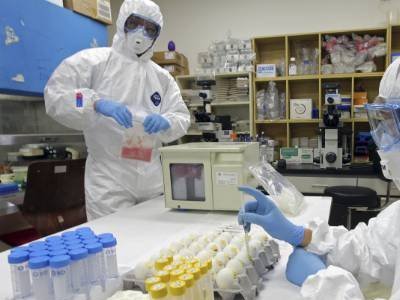Aircraft weapons, antiaircraft weapons, artillery, flamethrowers, firearms, assault rifles and many more are used for war or warfare. This has been the very way of winning war and it has been effective.
Even while using this weapons, the use of microorganism is also a very effective way of fighting wars.
Using bacteria, viruses or toxins to cause death or disease to people, animals or plants intentionally; so as to weaken their defense is an impeccable way of winning a war.
The use of microorganisms (bacteria, fungi, virus and protozoa) is not a new concept, there are several historical examples; such as the Japanese attacks on China during the Second World War, read more
Examples of biological warfare during the past millennium
| Year | Event |
|---|---|
| 1155 | Emperor Barbarossa poisons water wells with human bodies, Tortona, Italy |
| 1346 | Mongols catapult bodies of plague victims over the city walls of Caffa, Crimean Peninsula |
| 1495 | Spanish mix wine with blood of leprosy patients to sell to their French foes, Naples, Italy |
| 1650 | Polish fire saliva from rabid dogs towards their enemies |
| 1675 | First deal between German and French forces not to use 'poison bullets' |
| 1763 | British distribute blankets from smallpox patients to native Americans |
| 1797 | Napoleon floods the plains around Mantua, Italy, to enhance the spread of malaria |
| 1863 | Confederates sell clothing from yellow fever and smallpox patients to Union troops, USA |
It is not clear whether any of these attacks caused the spread of disease. In Caffa, the plague might have spread naturally because of the unhygienic conditions in the beleaguered city. Similarly, the smallpox epidemic among Indians could have been caused by contact with settlers. In addition, yellow fever is spread only by infected mosquitoes. During their conquest of South America, the Spanish might also have used smallpox as a weapon. Nevertheless, the unintentional spread of diseases among native Americans killed about 90% of the pre-columbian population McNeill, 1976. source
Microorganisms such as Bacillus anthracis causative agent of Anthrax, Clostridium botulinum causative agent of Botulism Francisella tularensis causative agent of Tularemia, Variola major causative agent of small pox, Coxiella burnetti causative agent of Q fever, Burkholderia mallei causative of Glanders and many more are used to fight wars.

credit
Fighting in war doesn't have to be with nuclear weapons, machines and the rest, biological agents and microorganisms can be delivered as aerosols, which would cause infections or death when breathed by the targeted victims.

I ALWAYS WELCOME CRITICS AND COMMENTS, ALSO IF YOU FEEL THERE IS SOMETHING I NEED TO DO TO IMPROVE, PLEASE INCLUDE IN YOUR COMMENTS
Regards
From 


This post received a 6% upvote from @randowhale thanks to @geeboy! For more information, click here!
Downvoting a post can decrease pending rewards and make it less visible. Common reasons:
Submit
I enjoy reading topics like this. Good one bro
Downvoting a post can decrease pending rewards and make it less visible. Common reasons:
Submit
This article seems just to deal with the effectiveness of biological weapons. I think at least one drawback is that it can backfire. You attack your enemy with a virus or bacteria. They find a cure for it, or find a way to make it more deadly...
There are ethics issues too. In a way the whole immigrant problem in Europe leaves them very vulnerable to biological weapons. The influx of immigrants with no sense of hygiene, and with a culture that allows for rape and beastiality makes for a real mess!
Downvoting a post can decrease pending rewards and make it less visible. Common reasons:
Submit